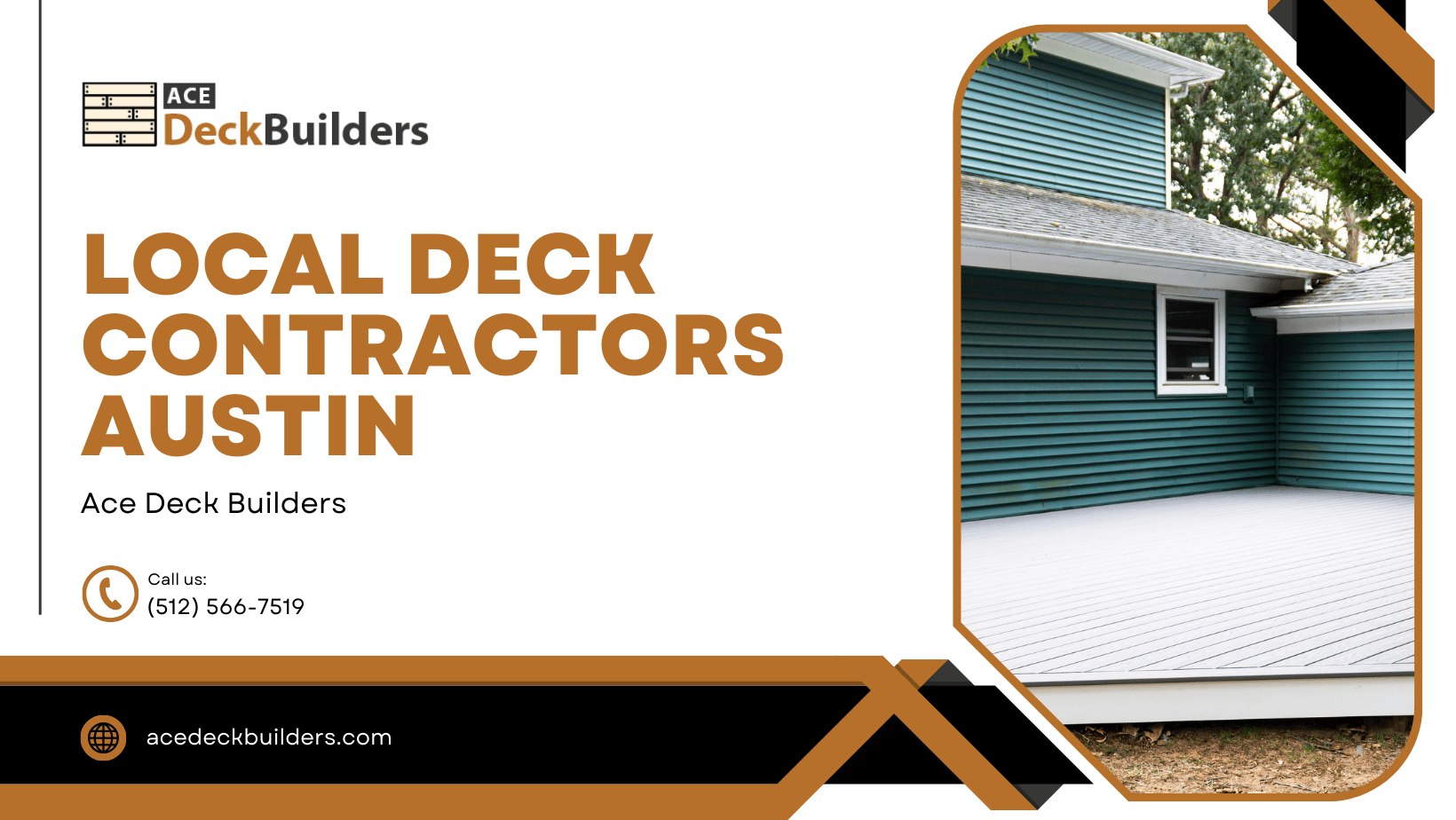

Ace Deck Builders – Personalized Deck Solutions in Austin
Ace Deck Builders provides custom deck installations for homeowners throughout Austin, delivering outdoor spaces that are functional, inviting, and built to last. Whether you're dreaming of a peaceful retreat or a vibrant social area, we’ll help bring your outdoor vision to life.
We start by understanding your space and goals. Our team helps you choose the right materials—from pressure-treated wood to composite decking—based on your budget, maintenance preferences, and design taste. Every detail is considered to create a deck that’s tailored to your needs.
Our installation process focuses on quality from the ground up. We use proven building techniques, reinforce structures for long-term stability, and ensure clean, polished finishes throughout. No compromises—just dependable construction and expert results.
Custom additions like lighting, railings, seating, and steps can be seamlessly added for a truly one-of-a-kind look.
If you're ready to upgrade your backyard with a custom deck, Ace Deck Builders is ready to get started. Contact us today for a consultation.
Before you begin the installation process, it's essential to plan your deck lighting thoroughly. This means considering both functionality and aesthetics. Start by determining the primary purpose of your lighting: do you want to create ambiance, ensure safety by illuminating steps and edges, or highlight certain features of your deck? Once you have a clear idea of what you need, sketch out a rough layout of your deck and decide where lights would be most effective. Consider different types of lighting such as post lights, recessed step lights, or string lights for different areas and functions.
Selecting appropriate fixtures for outdoor use is crucial for safety and durability. Look for lighting that is specifically designed for outdoor environments, with waterproof or water-resistant ratings like IP65 or higher to withstand the elements. LED options are often preferred due to their long lifespan and energy efficiency. Additionally, consider low-voltage systems which are safer to run outdoors and reduce the risk of electrical hazards. Ensure compatibility with any existing outdoor power sources or plan for the necessary wiring that may need to be installed.
When installing deck lighting, always prioritize safety by turning off all power sources before beginning any electrical work. It’s highly recommended to hire a qualified electrician who understands local codes and can ensure that all wiring is up to standard. If doing it yourself, carefully follow all manufacturer instructions and use protective gear as needed. Securely mount fixtures in place so they cannot become loose over time due to weather conditions or general wear-and-tear from use.
After installation, regular maintenance is key to ensuring longevity and safety of your deck lighting. Periodically check all fixtures for signs of damage like cracked housings or exposed wiring that could pose risks. Clean lenses regularly for optimal light output and replace bulbs as necessary - if using LEDs this will be infrequent but still important when needed. If issues arise such as flickering lights or non-functioning fixtures, address them promptly to avoid potential hazards or further damage; again considering professional assistance if beyond basic troubleshooting steps.
| Composite and Wood Deck Options | |
|---|---|
| Composite Decking Options | Low-maintenance, long-lasting composite materials perfect for modern outdoor living. |
| Wood Deck Installation | Traditional wood decks built with cedar, redwood, or pressure-treated lumber. |
| Eco-Friendly Deck Materials | Decks built with sustainable and environmentally friendly materials for green living. |
| Deck Material Selection | Consultation and guidance on the best deck materials for your climate and use. |
| Composite vs Wood Decks | Side-by-side comparisons to help you choose the right material for your deck project. |
Different soil types can significantly influence the stability and longevity of a deck. Sandy soils, for instance, offer excellent drainage but may shift over time, potentially leading to an uneven deck surface. Clay soils, conversely, retain moisture and could cause wood supports to rot faster. It's crucial for installers to assess the soil type in the area and adjust their building plans accordingly, such as choosing appropriate footing depths or selecting treated lumber.
The terrain where a deck is to be installed dictates much about its design and construction process. A flat yard allows for a relatively straightforward build compared to a sloped or uneven landscape which may require additional structural support like retaining walls or graded steps. The terrain also influences how water drains around the structure—a key factor in preventing damage from moisture accumulation.
A deck’s footings are essential for distributing weight evenly and providing a stable foundation. The bearing capacity of the soil—its ability to support weight—is therefore critical in footing design. Softer soils might necessitate larger footings or even specialized foundations like helical piers that can reach down to more stable earth layers.
Soil erosion poses a threat to deck stability by potentially undermining supporting structures. In areas prone to erosion, it's important to implement control measures such as landscaping with native plants that stabilize the ground with their root systems or installing erosion control fabrics that keep soil in place during heavy rains.
Topographic features of an installation site may require adjustments in deck design. For example, building on a slope often involves multi-level decks that follow the contour of the land or incorporating steps into the design for accessibility. Each level must be carefully planned out to ensure stability while maintaining aesthetic appeal.
Proper drainage solutions are paramount in any decking project as water buildup can lead to wood decay and compromise structural integrity. Deck installations should include considerations for directing water away from both the deck and house foundations through proper grading or installing drainage systems beneath decks built close to ground level.
When dealing with challenging terrains, maintaining accessibility can become complex. Incorporating ramps instead of stairs is one way builders accommodate those with mobility impairments without compromising on safety or design elements dictated by terrain issues. This ensures that all individuals have access while still addressing environmental conditions specific to each unique location.

In most cases, you will need a permit to build a deck. Our team will handle the permitting process, ensuring your deck is built to code and meets all local regulations.
To maintain your deck, you should regularly clean and inspect it for damage or wear and tear. Applying a sealant or stain can protect the wood and extend the life of your deck.
Look for reputable deck installation services in your area by checking reviews, asking for recommendations, and reviewing the contractors' past work.
Research local companies online, ask for recommendations, and get quotes from multiple contractors to ensure you're choosing the best option for your needs.
The time it takes to build a deck depends on the size and complexity of the project. On average, it can take anywhere from a few days to several weeks to complete a deck.